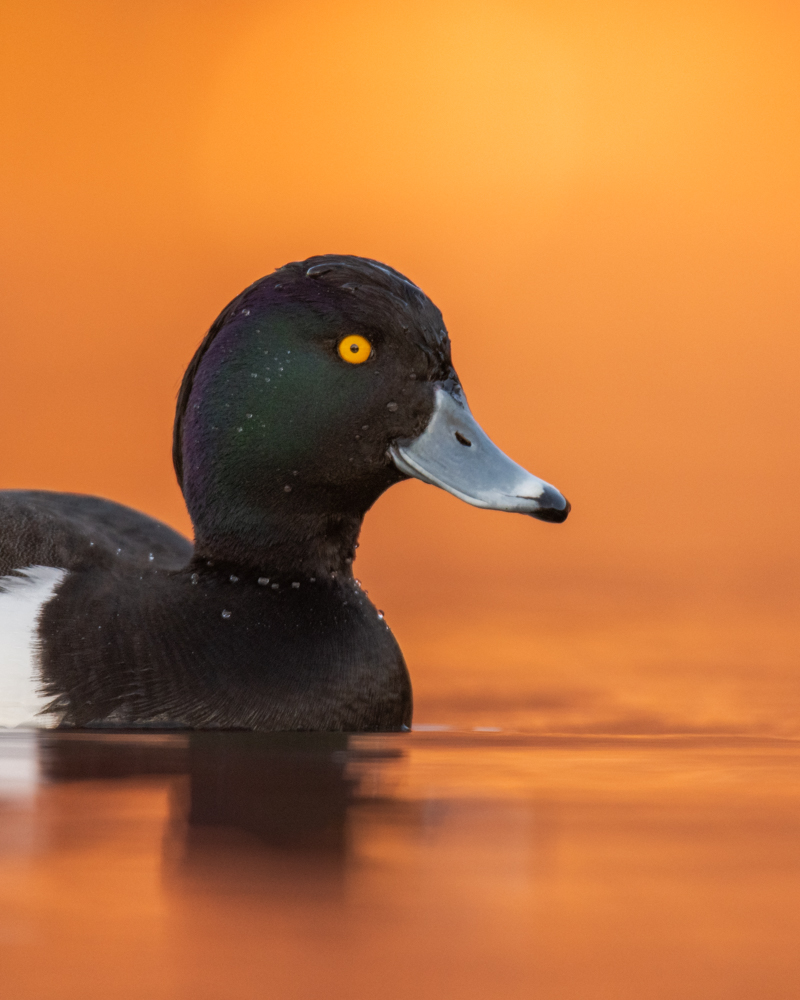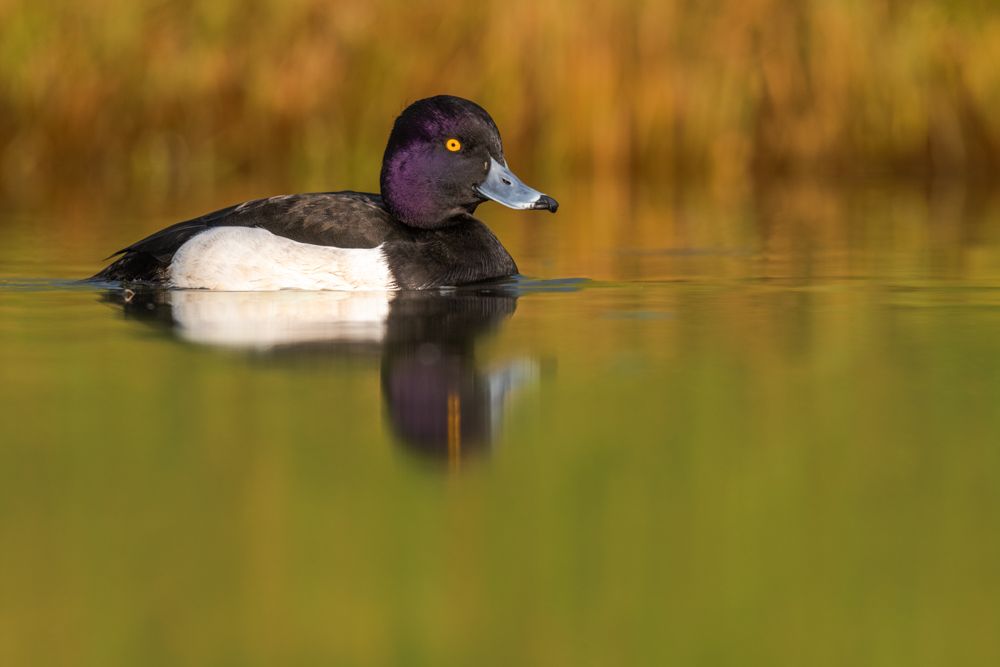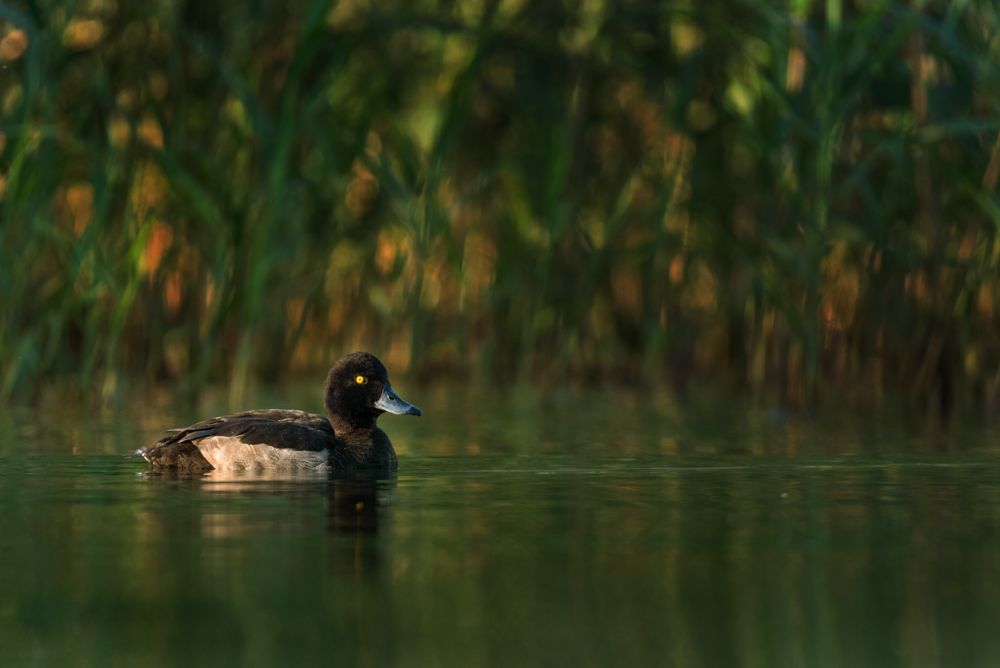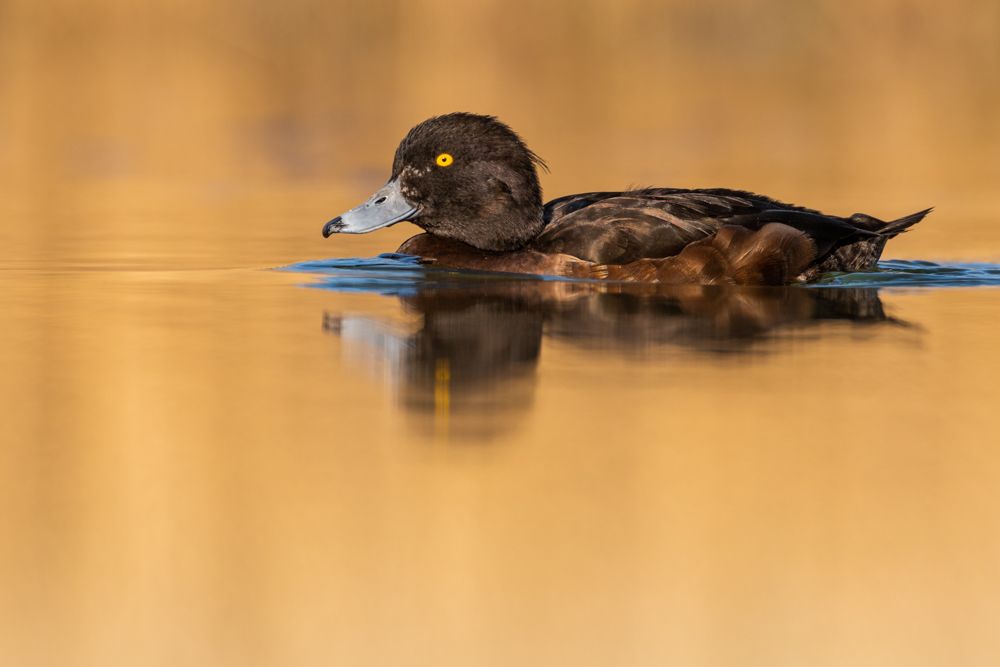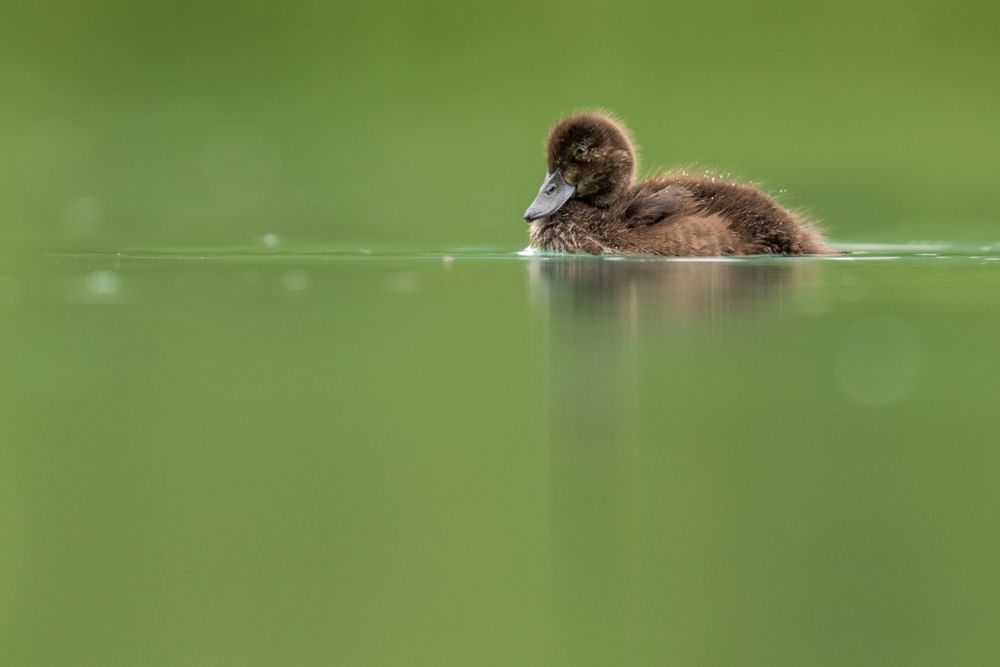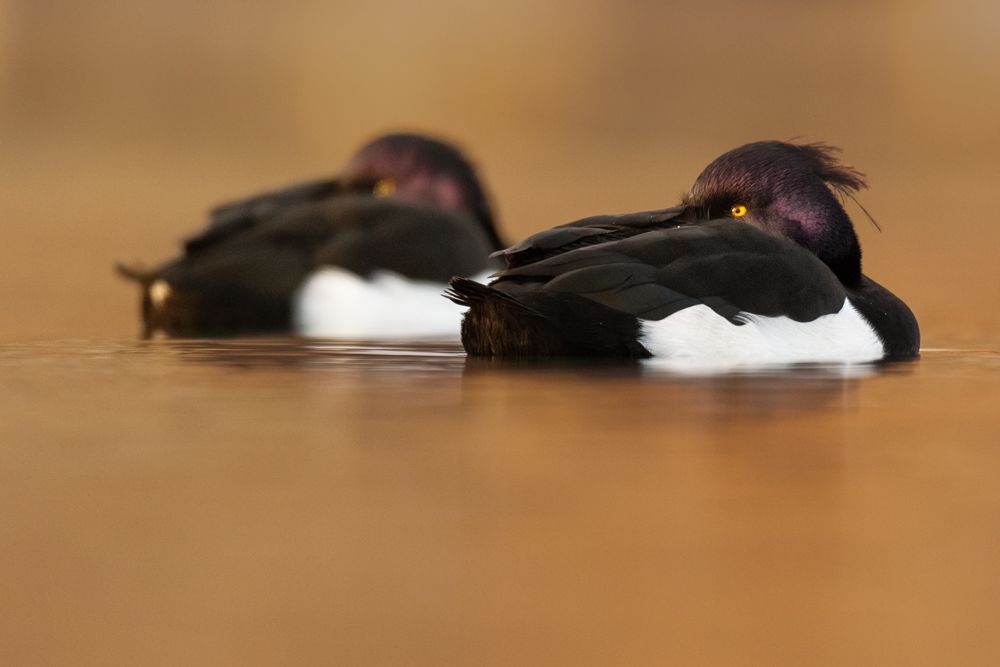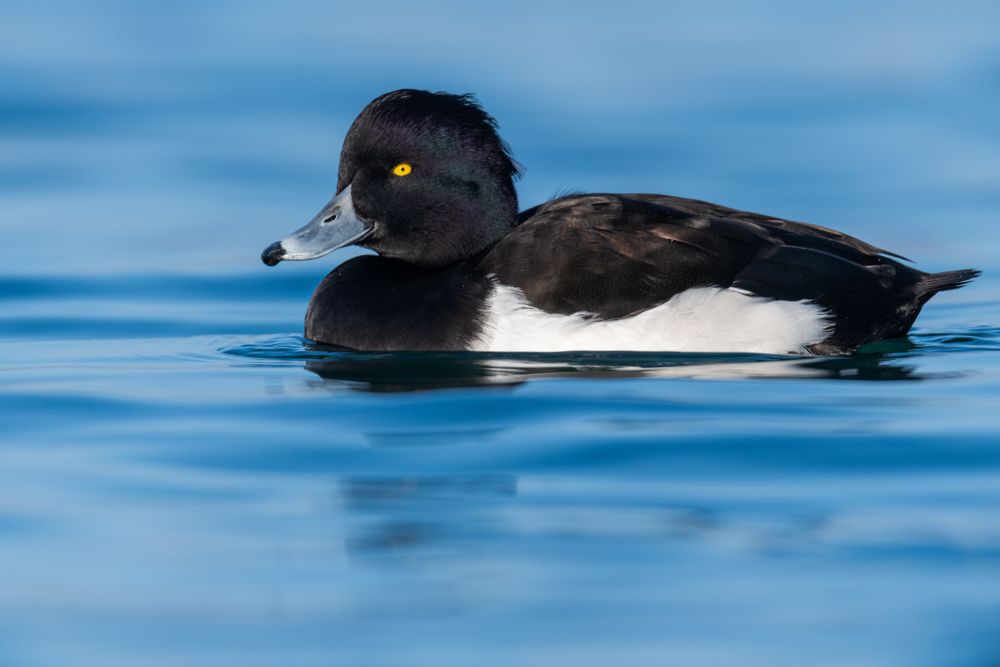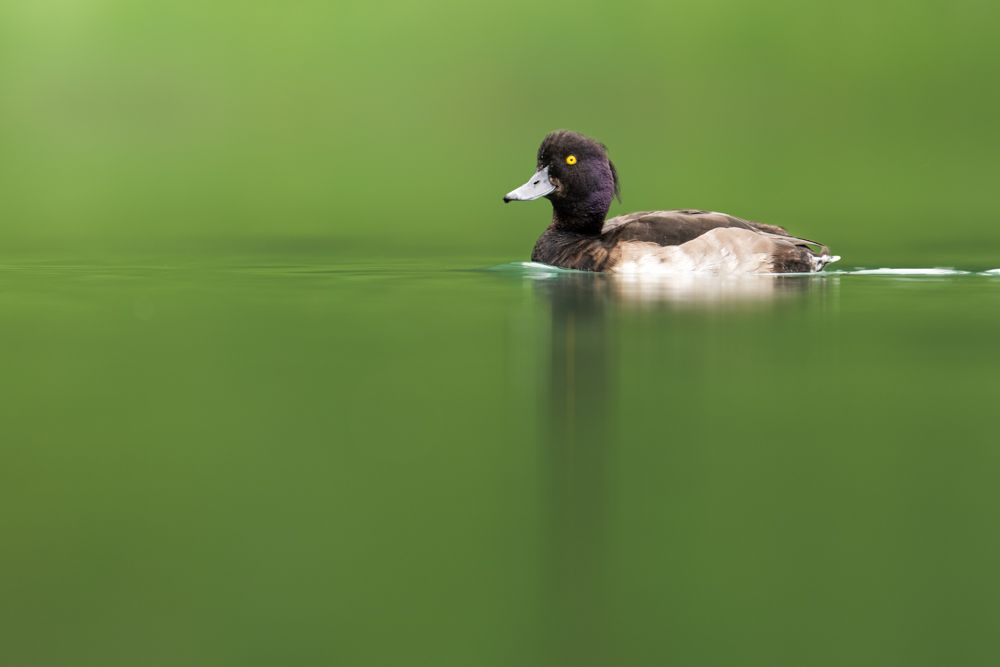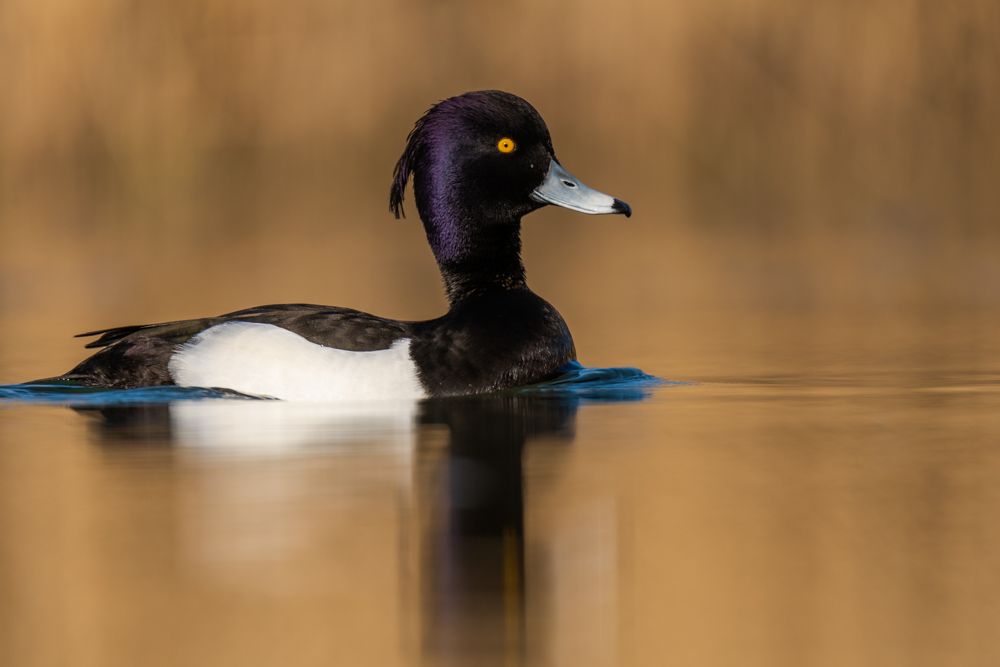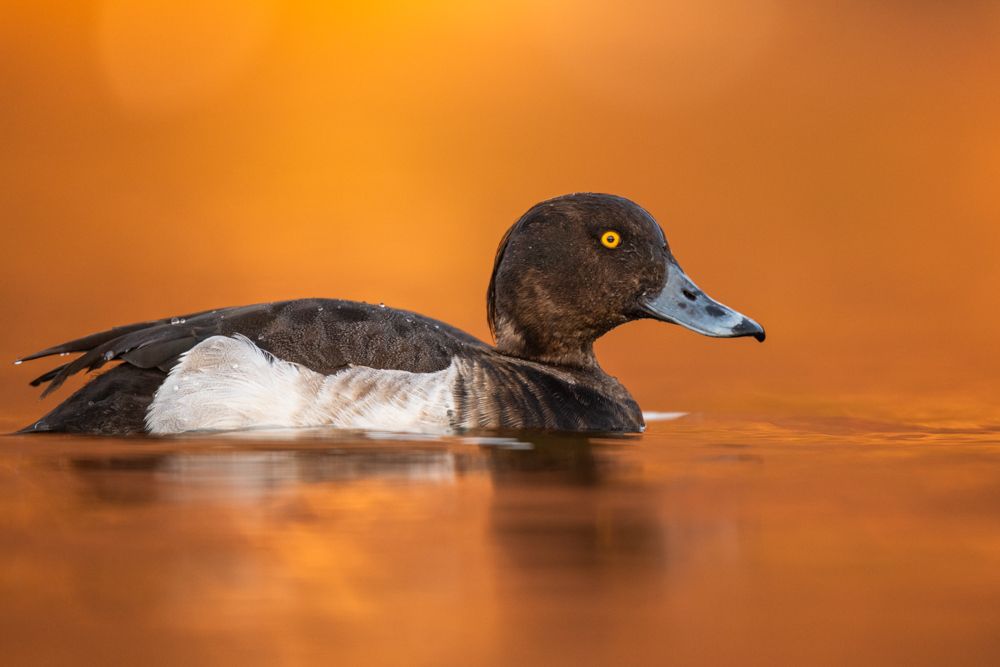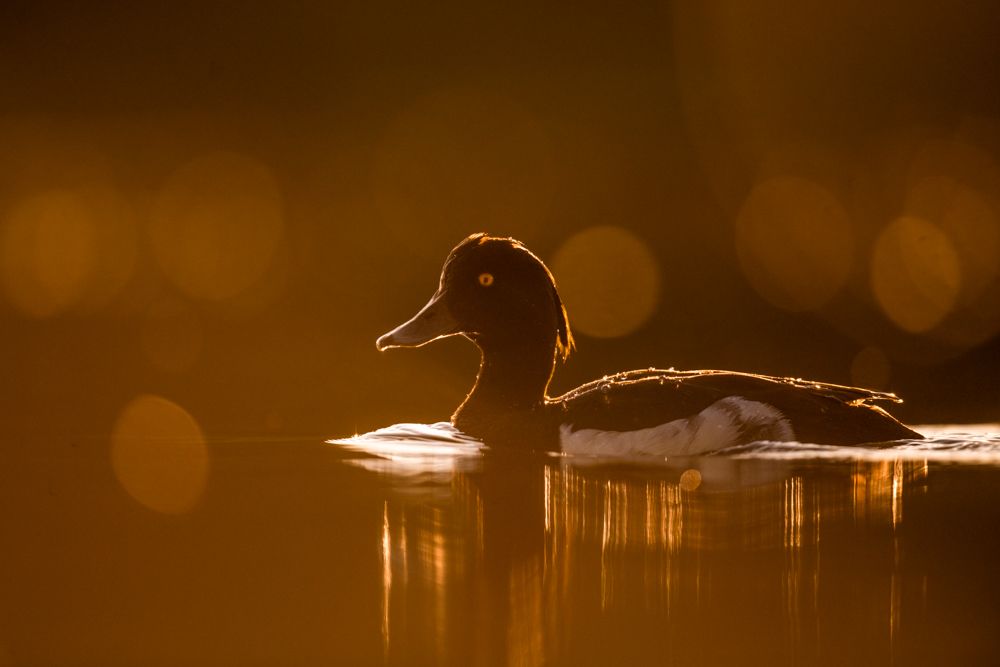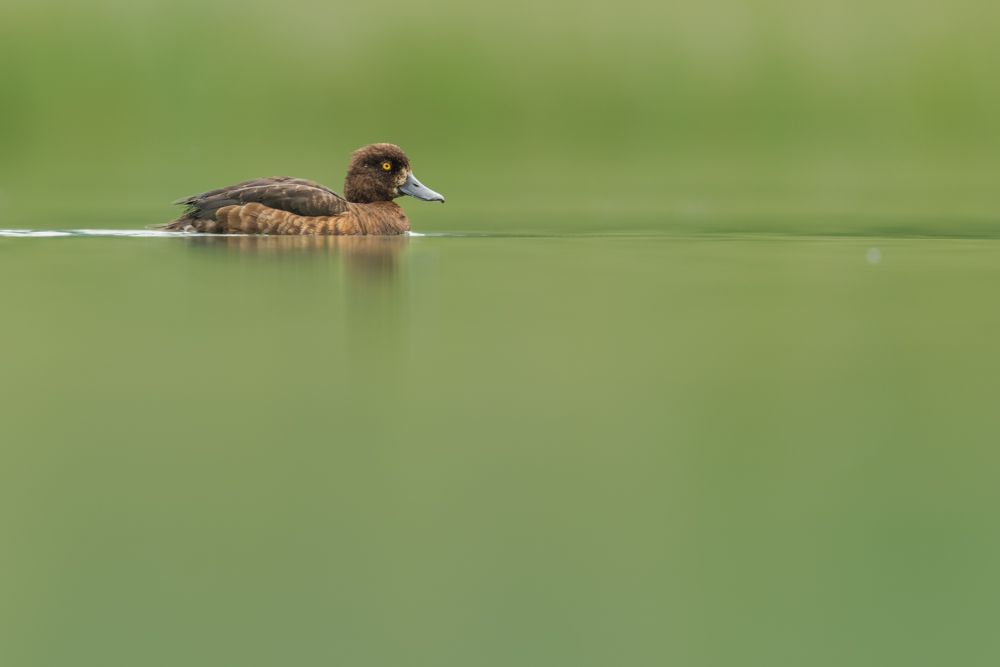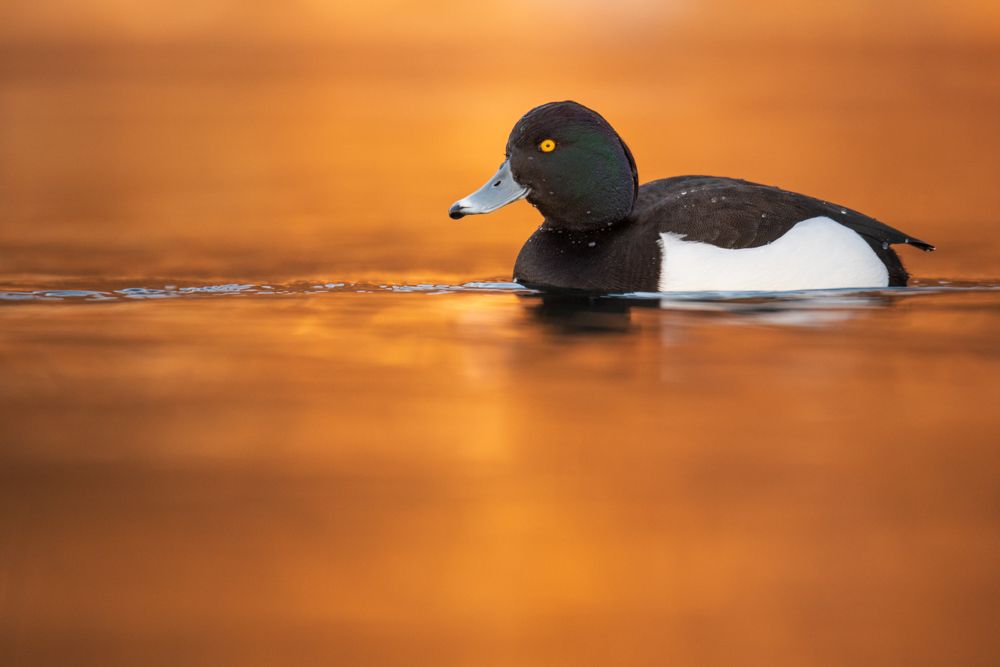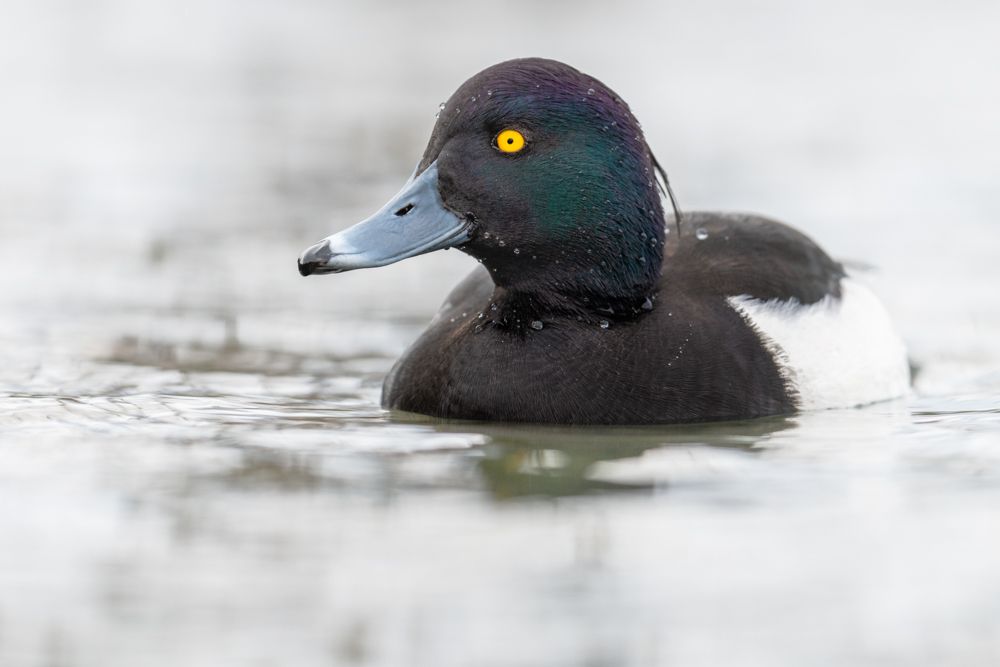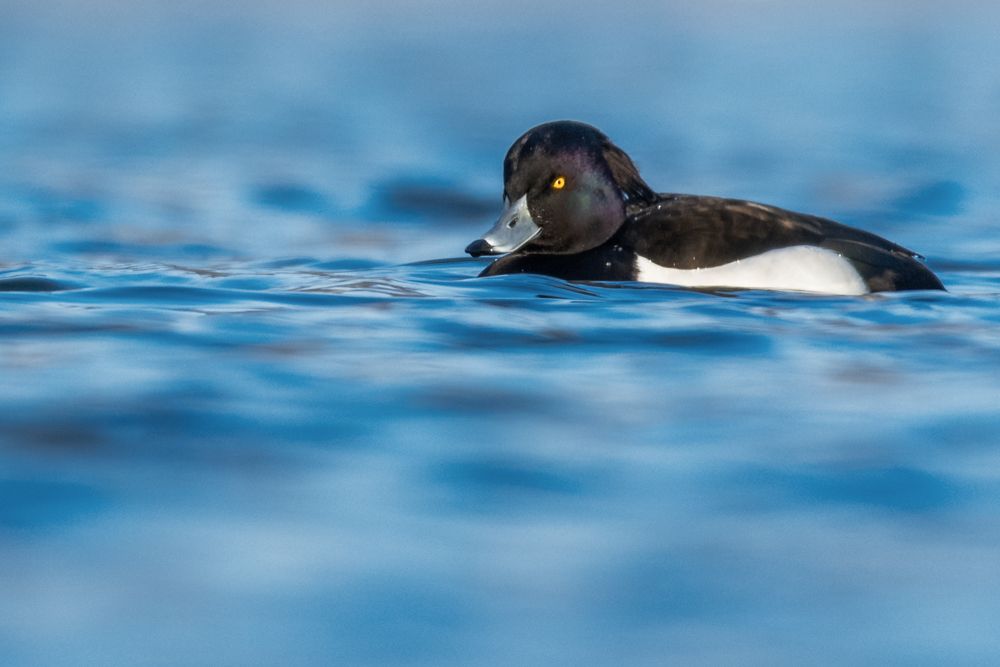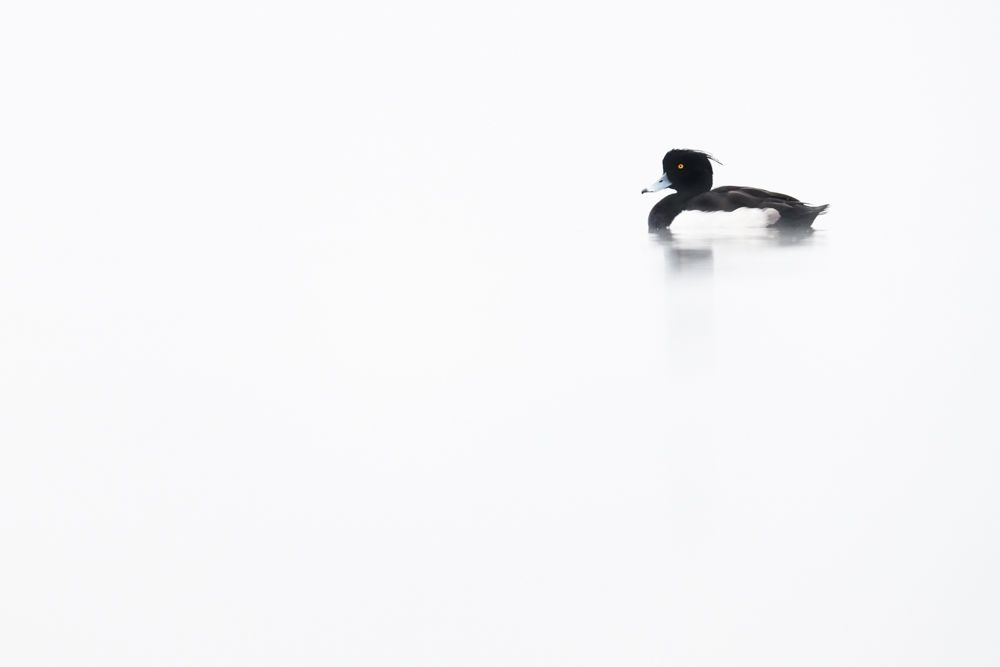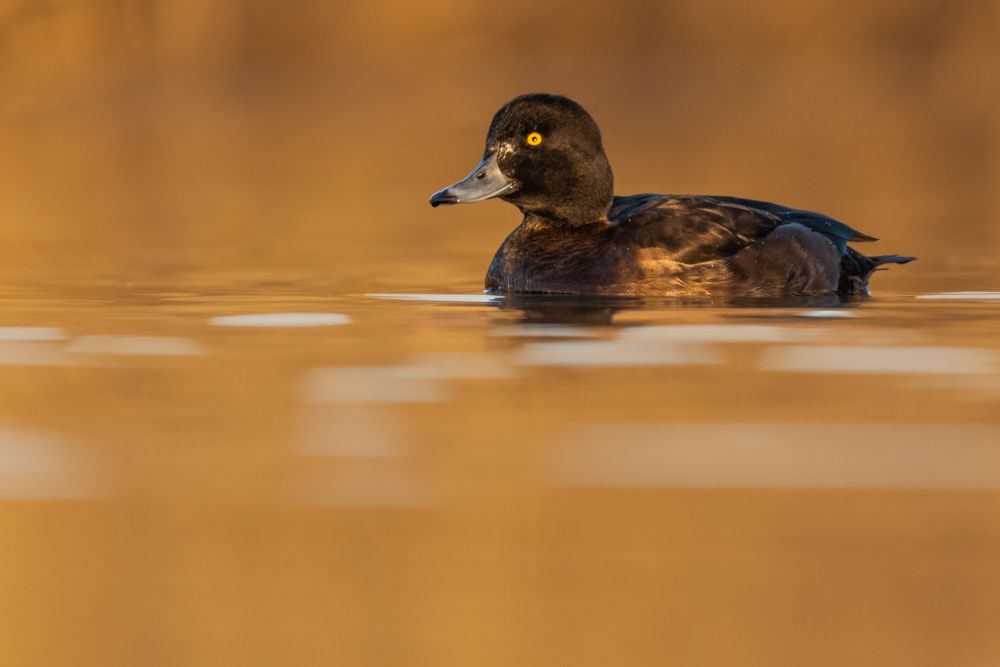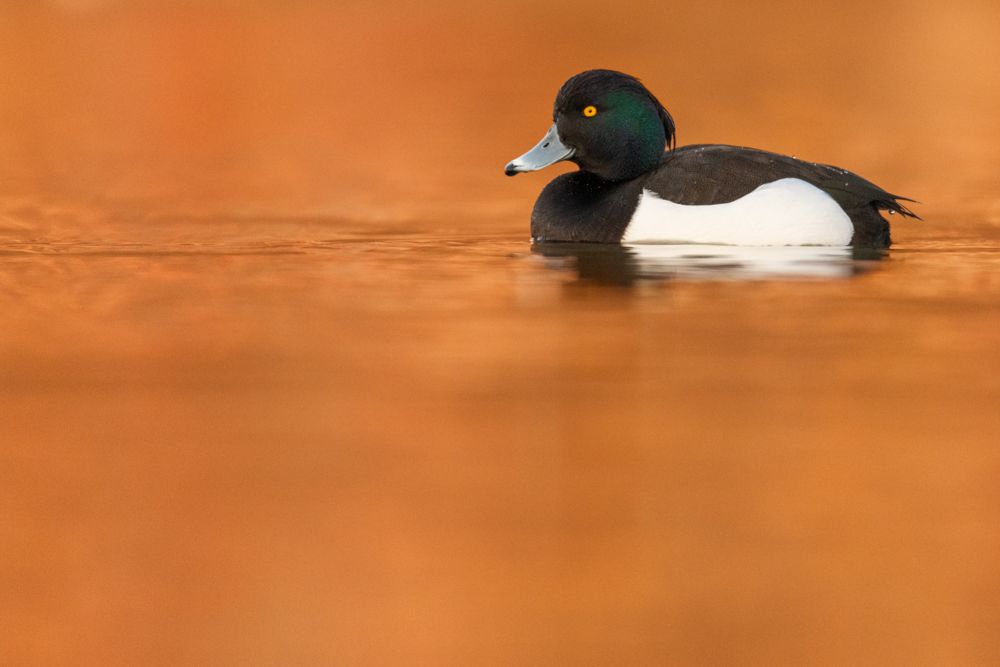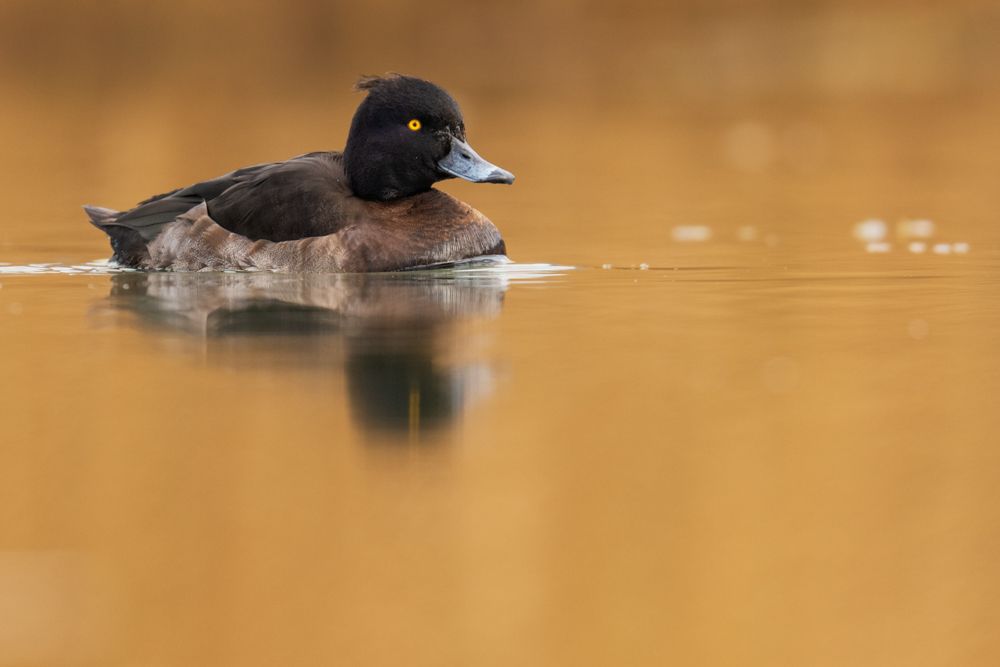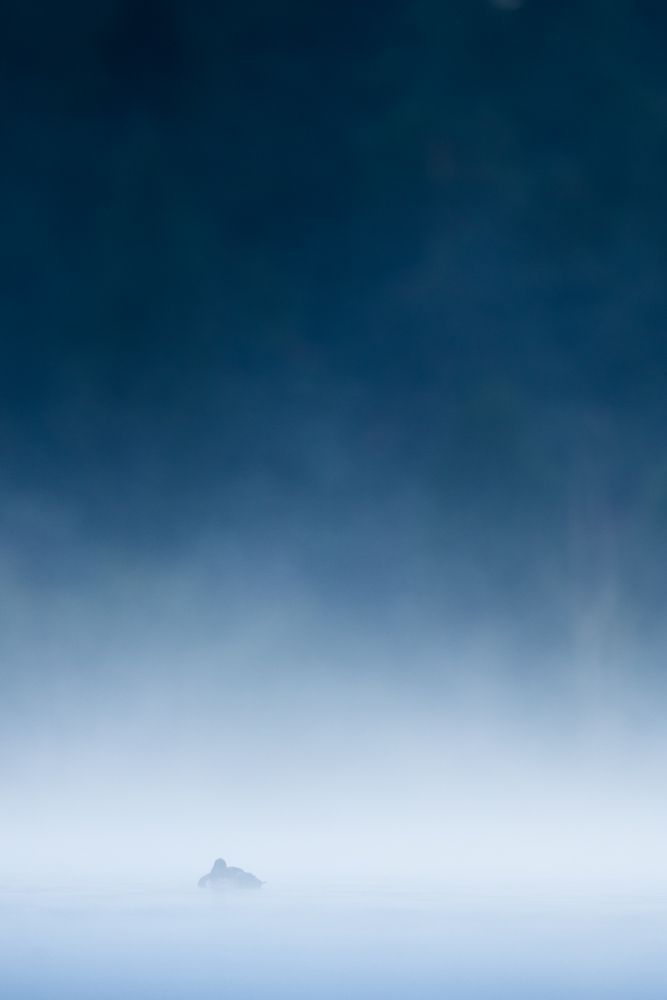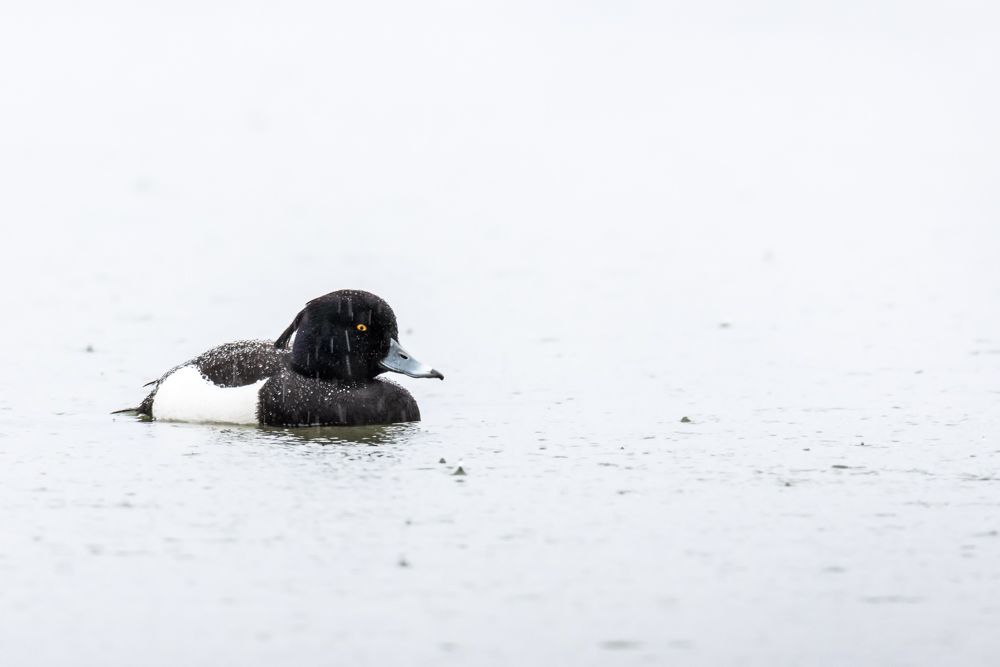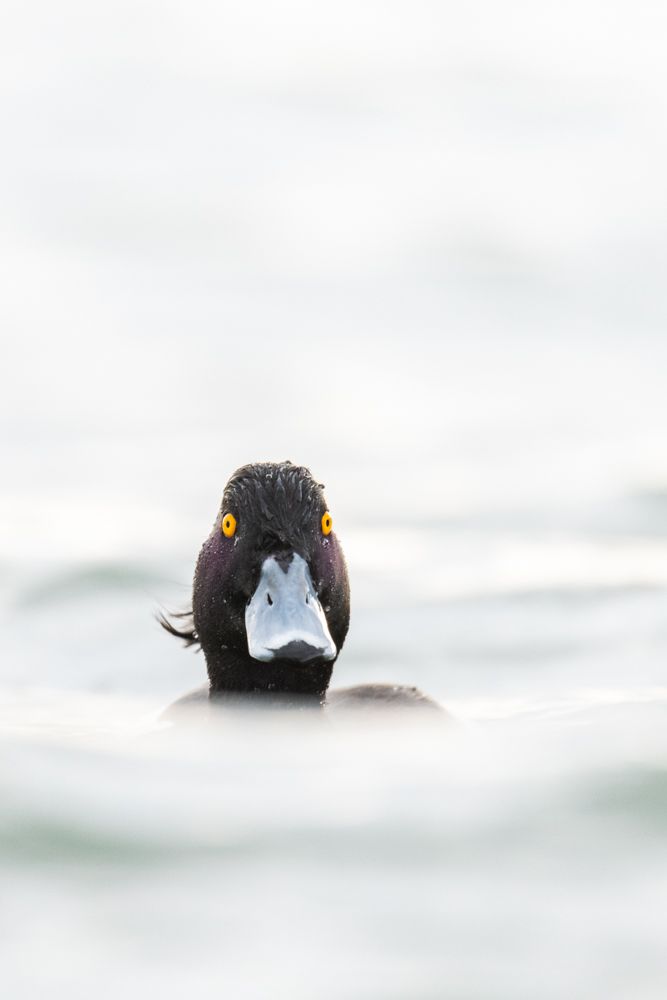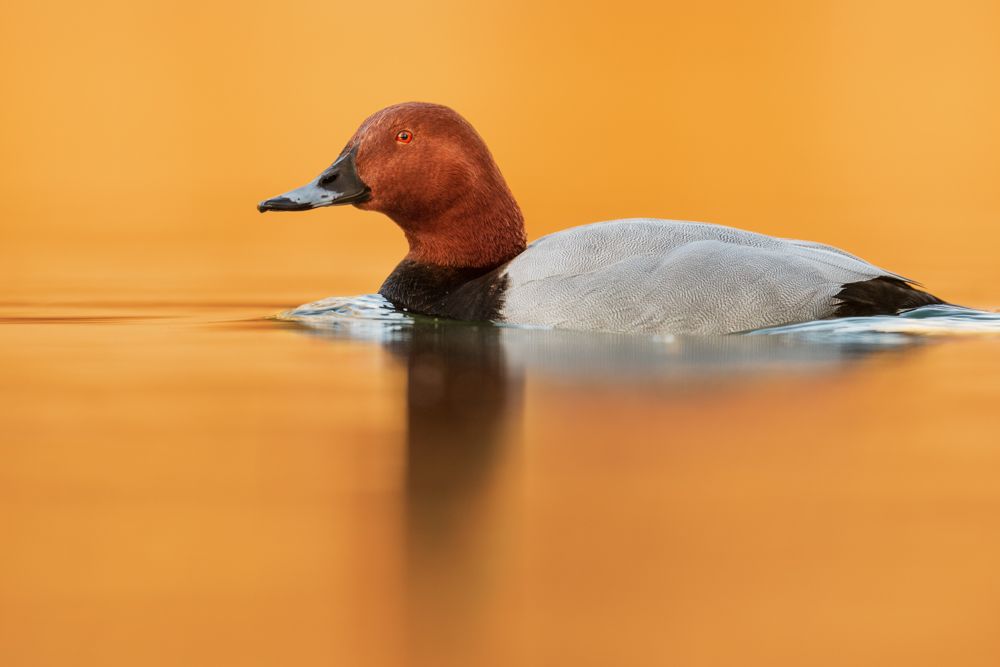Tufted duck (Aythya fuligula)
Profile
Scientific name: Aythya fuligula
Class: Birds
Order: Anseriformes
Family: Anatidae
Length: 40-47cm
wingspan: 67-73cm
Weight: 550-900g
Distribution: Eurasia
Breeding population CH: 160-280 pairs
Habitat: Various lakes and slow-flowing waters
Migration behaviour: Resident bird, short to long distance migrant
Appearance & Identification
The male tufted duck is mostly coloured black in the breeding plumage. Only the sides are white. The males have a tuft of feathers at the back of the head. This is a characteristic which is also found on herons. In German, the duck is therefore called ‘heron duck’. The feathers on the head can shimmer purple to turquoise depending on the light. The beak is coloured grey except for the black nail (tip of the beak). The eye is coloured yellow all year round.
In the eclipse plumage the white sides are replaced by grey, patterned feathers. The tuft of feathers is less pronounced and is completely lost in some individuals. The iridescent head feathers also lose their effect.
The female is generally a little more brown. The sides are brown too and together with the chest feathers they have a slightly lighter colour tone than the rest of the plumage. The females also have a yellow iris. The tuft of feathers at the back of the head is only slightly or not pronounced at all. This varies a lot from individual to individual.
Risk of confusion
Tufted duck males have a certain resemblance to the males of the scaup. However, the scaup has a light grey back with a fine pattern. The back of the tufted duck is black like the rest of the body, except for the sides.
The feathers at the base of the tufted duck female's beak is in some cases white. This is actually a typical feature of the female scaup, a species that is becoming increasingly rare in Switzerland. Female scaups have no hint of a tuft of feathers and are also slightly larger. Identifying a female scaup is very difficult. However, it can be assumed that 99% of the questionable ducks in Switzerland are female tufted ducks and not scaups.
Habitat
Tufted ducks breed at various lakes and slowly flowing waters. A small part also breeds at park ponds. In winter, tufted ducks have much lower demands on their habitat and a large number spend the winter in harbours, where they are well protected from wind and waves.
Distribution in Switzerland
In summer, the tufted duck is found in Switzerland mainly at higher-lying mountain lakes, but also occasionally in the Swiss plateau (Mittelland). The breeding population is estimated at around 180-260 breeding pairs today. The trend has been slightly positive in recent years.
In winter, tens of thousands of tufted ducks migrate from their breeding grounds in north-north-eastern Europe and Russia to Switzerland. They benefit from the good food supply due to the zebra mussel. The zebra mussel was introduced over the Rhine in the 1960s. Since then it has spread to almost all the larger waters of Switzerland. The winter population of diving ducks that feed on mussels has increased massively since 1960. But since the 1990s the trend has come to a halt and started decreasing again. Due to climate change, ducks no longer have to fly so far south to find non-freezing waters. Since 1990, the winter population of tufted ducks has fallen from 200’0000 winter visitors to 100’000 winter visitors. Tufted ducks thus will soon lose the title of the most common water bird in winter to the coot.
Diet
The tufted duck belongs to the diving ducks and acquires its food by diving. As a rule, it dives to a depth of about 5m. A dive takes about 20 seconds. The menu of the Tufted Duck includes small animals like larvae, mussels and snails. To a small part, the Tufted duck also feeds on water plants. Especially at harbours there are also ducks that have copied it from mallards and feed on the bread of passers-by. The bread is like for all other ducks harmful for them. Although this provides a lot of easy energy, the high salt content is unhealthy for the ducks.
Breeding behaviour
The mating season begins as with many other ducks already at the start of winter. The female takes care of the brood alone. In spring she lays 6 to 14 eggs in its nest, which is hidden in the shore vegetation. Females also like to lay their eggs in the nests of their conspecifics or in nests of other duck species. The eggs are incubated for about 24 days. The young leave their nest already a few hours after hatching. Although they are still guided and protected by their mother, they have to look for and take in their food themselves.
Tufted ducks often hybridize with other duck species. Known hybrids of tufted ducks are for example with ferruginous ducks, pochards and scaups.
Migration behaviour
The tufted duck is mostly a migratory bird. Thus, in autumn the birds leave their breeding areas and fly south. Further north, the waters freeze over and the tufted ducks can no longer get their food. Depending on where the breeding areas are located, the ducks have to travel very long distances. Some of these distances are well over 4’000 km, which is why they are classified as both short- and long-distance migrants. Tufted ducks that breed further south remain in their breeding area all year round.
Photographing the tufted duck
Tufted ducks can be observed and photographed at all bigger harbours during the winter. However, there is the difficulty that it is not easy to reach eye level in the harbour. But the tufted ducks in the harbour are used to us humans and gradually lose their shyness during the winter. Some individuals are even interested in you and swim towards you without fear.
There is a good trick for approaching rather shy tufted ducks. I have described it in an earlier article and use it myself from time to time.
Tufted ducks with their contrasting plumage are very difficult to expose correctly. Especially the plumage at the head are quickly underexposed and can be recognized as black spots. These black spots cannot be corrected with editing software. If the exposure is too long, the black plumage areas will be correctly exposed, but instead the white areas are overexposed. This also cannot be corrected and you usually have to make a compromise. Only with very good light, i.e. at sunrise and sunset or with thick clouds it is possible to expose both the dark and the light plumage parts correctly.
Other species
Resources
The population figures, length, weight and wingspan correspond to the data of the Vogelwarte Sempach
Information on behaviour, distribution etc. is based on my own observations and was supplemented with information from the following sources:
The Birds of Switzerland (2007) Lionel Maumary et al.
Swiss Breeding Bird Atlas 2013-2016
The Cosmos Bird Guide (2017) Lars Svensson et al.


